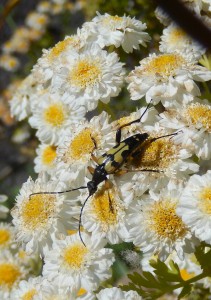It was a pleasure to do the butterfly transect today. Even before I reached the Gunnersbury Triangle, I saw a Red Admiral in the street.
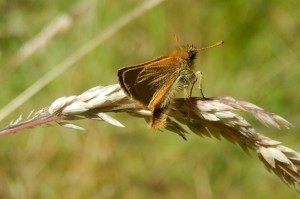
Once inside, I was rewarded with several very small, very active Skippers with their jittery, chaotic, jinking flight. It is hard enough to follow with the naked eye, close to impossible with binoculars, and presumably difficult for bird predators (as well as the reason for the name Skipper). When one finally did perch, it was clear it was a Small Skipper, as the Essex Skipper (not limited to that county) has more black on its antenna tips.
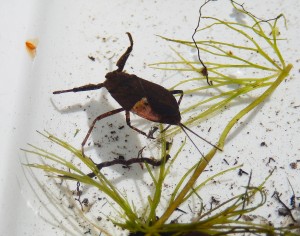
Down at the pond, a primary school class and a group of enthusiastic teachers were catching Ramshorn Pond Snails, Newts, Dragonfly larvae and this fine Water Scorpion.
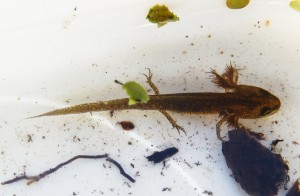
This small newt has nearly completed its metamorphosis from a tadpole. It has four legs, the hindlegs so thin they were nearly invisible to the naked eye, but its gills are still large, feathery and projecting from the sides of the head.
One of the large handsome hoverflies that frequents woodland glades came into the hut. This species has the front of the abdomen pale yellowish but no other stripes; the pale area seems to glow when the fly is hovering, presumably making it look sufficiently black and yellow to warn off predators (of course, many bees are black).
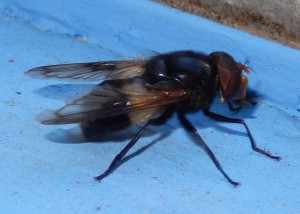
Finally, here’s a Strangalia maculata, one of our most handsome longhorn beetles. Nearby was another Red Admiral.
